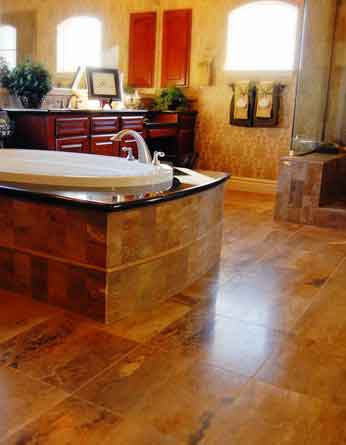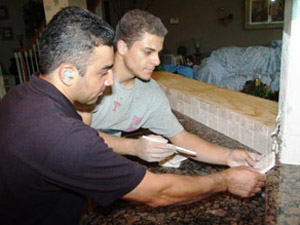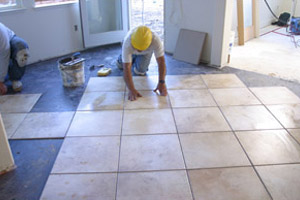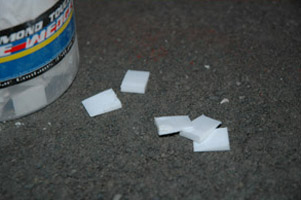Mohegan Lake
Yonkers
Mount Kisco
Stone - Before Installation
Know this information before installation day.
Think of it this way: the earth has been preparing your natural stone for millions of years. Doesn’t it make sense that you prepare your home for the flooring before it arrives? Of course it does, and that’s why we’ve prepared this section for you.
Being prepared and involved beforehand will help insure that the process is done smoothly and efficiently, and, hopefully, eliminate expressions of “If only I had checked on…”
Below are the key things you should know about before installation day,
Tip #1: few of us are naturals at installing natural stone flooring.
Installing this type of floor is heavy, difficult work, labor intensive and extremely exacting. It’s simply not for the weekend do-it-yourselfer.
We strongly recommend you call upon a reliable, seasoned, dedicated professional to install your natural stone floor. Ask us for help in this matter.
That way you can be assured of a beautiful, efficient and correct installation.
However, while installing natural stone flooring is a skill that is developed through years of experience, your understanding of the basics of installation will increase your knowledge of the process, and enhance your confidence in the professionals working in your home.
As with most flooring products, the first step is to prepare the substrate, the surface on which the stone tile will be laid. Using professional installers will insure that the correct materials and methods are employed.
With cement subfloors, installers can opt to apply the mortar directly to it and simply lay the tile.
Wood subfloors, however, usually require a CBU or cement backer unit for support and a moisture barrier.
It’s important to note that movement in the substrate material can sometimes occur. For example, water penetrating the grout and/or freezing and thawing temperatures can sometimes cause tile to rise, crack or chip.
To help prevent this, some installers will use a material called Ditra.
Ditra is an underlayment that provides a solid foundation for the tile, while still allowing for slight movement of the substrate without damage.
For example, in the event that water penetrates the grout in a bathroom, it provides a protective waterproof barrier.
Your floor will now come to life.
The installer will measure the area and snap chalk lines for an accurate layout, then determine which pieces of tile will need to be cut to fit the area.
Tiles that need to be cut are measured and marked with a pencil.
The installer then uses a wet saw with a 10-inch diamond blade to cut through the stone tile.
The freshly cut edges are smoothed by hand with a white stone.
Once the layout has been determined, the installer can begin setting the tile.
Your beautiful new floor is about to be born.
Thinset mortar, which is a cement based adhesive, is applied to the surface with a notched or grooved trowel.
The tile is then placed into the thinset and pressed firmly into place.
Wedge or butter? Know the difference.
Stone tile is typically installed with narrow grout joints, meaning the tiles are laid very close to each other on all sides.
If it is a large tiled area, installers may use plastic tile wedges or spacers to maintain consistent spacing between each tile. In small areas they may not use these at all.
The installer may back butter the back of the tile with thinset mortar which will strengthen the bond between the tile and mortar already laid on the substrate.
As the installers move along setting the tile, they continually check to make sure the newly tiled area is as level as possible.
Since stone tiles vary in thickness and size, the amount of thinset mortar applied is adjusted where needed.
After all the tiles are set and the thinset mortar has fully cured, the installer fills the joints between the tiles with grout.
Un-sanded grout is most commonly used in natural stone installations.
This type of grout is used because it is able to fill the small joints more easily and will not scratch soft stones like sanded grout might. Your installers think of everything.
Un-sanded grout is a dry, Portland cement-based product that is mixed with water onsite.
The grout mixture is spread over the tiled area with a grout float to fill in all the joints.
A sponge is then used to remove excess grout from the surface of the tile, while leaving the grout in the joints to cure.
And that is how your beautiful natural stone floor is professionally installed.
What to know and do before installation day
Deal first with your furniture.
Remove all furniture and other objects and materials from the areas where the installation will take place. Some installers will move your furniture, but there may be an additional charge for doing so.
Before moving, you’ll also need to empty the contents of china cabinets, closets and the like.
Be aware that the area of installation must be climate controlled (heated or air conditioned). Indoor humidity should be maintained between 45-65%.
Now address your old floor covering.
Please consider how your old floor covering will be taken up and disposed of. This can be a time consuming task. We recommend that you check with us about the cost and the method of disposal.
If you prefer to remove your present floor covering, do it at least one day prior to arrival of your natural stone product to allow for cleanup and floor preparation. If removing old carpet, please leave tack strips in place and pull the staples out of the floor from the original pad.
What will you do about your trim?
In many cases, moldings and baseboards need to be removed for natural stone installation. Your installer may do this but at an additional charge and they will probably not be responsible for damage or breakage due to dry or brittle wood.
Painted baseboards, woodwork and paint may need retouching after the installation is complete. If necessary, this is your responsibility.
Next, address the subflooring.
Your existing subfloor may need to be prepared to receive the natural stone, or a new subfloor may be required. We suggest you discuss this with us and, if subfloor work is necessary, that it be done by qualified professionals. It is important that the subfloor be as clean and level as possible.
Ensure that the doors swing free.
When natural stone is installed, there’s always the possibility that the doors, especially closet doors, basement and bedroom doors, may not clear the new natural stone and swing free.
Some installers will remove doors in order to install the natural stone and re-hang them if possible. They probably won’t shave or cut down doors to insure clearance. You should check with us as to their policy and the cost. You may need to arrange for a qualified carpenter to provide this service after the installation of your new natural stone floor.
Stay on top of the clean-up.
Installing new natural stone will produce waste. Usually these materials are collected by your installer and left at your trash collection site.
Check with us before the day of installation so you’re clear about the clean up, if there are added costs to do so, and ask about the plan for natural stone remnants.
What to know and do during installation day
Home is the only place to be.
Be prepared to be at home the day of installation and be available in case the installation crew has questions.
Your presence will insure that the correct natural stone is installed in the right areas.
Because it is difficult to estimate the length and circumstances of each job, some installers may not be able to give you an exact time of arrival. We suggest you be flexible and keep in touch with us.
The best laid floors are laid safely.
Your installers will use a variety of tools and techniques that can make the work area hazardous. Please make sure that children and pets are kept out of the work area on installation day.
Walk-thru and talk it through.
We recommend that, prior to the completion of the installation, you walk thru the job with the chief installer. This will give you the opportunity to ask questions and be clear on any final details.
What to know and do after installation day
Breathe free and easy.
If you are sensitive to dust and odors, good ventilation should be established for 48 to 72 hours after installation.
When it comes to installation day be prepared.
Know what to do, when and how. Understand the needs of the installers and the installation process and your natural stone installation will run smoothly and you will be left with a beautiful product to enjoy for years to come.



